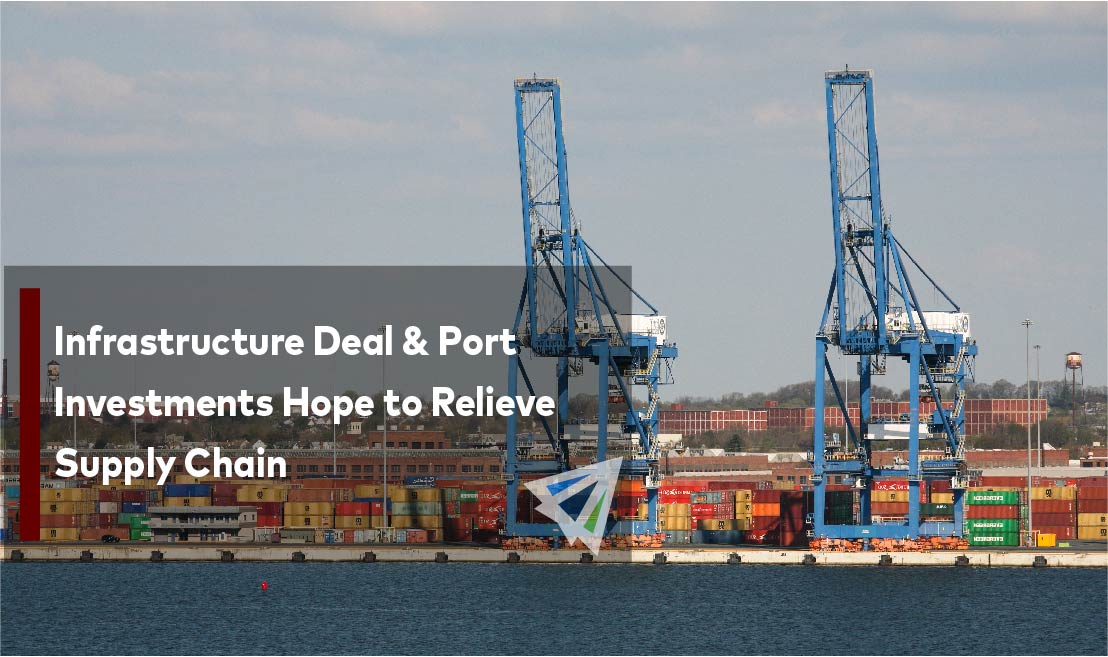Infrastructure Deal & Port Investments Hope to Relieve Supply Chain
As markets adapt and evolve, infrastructure and technology must follow. For most industries, it isn’t so difficult to get the ball rolling on that development, but things are different in the international shipping industry. Infrastructure updates are long overdue as consumer demand has seemingly landed at a new high permanently. However, infrastructure changes are difficult, expensive, and take a lot of time.
President Joe Biden recently visited the Port of Baltimore to elaborate on the steps his administration is taking towards a major infrastructure investment at the port to help alleviate congestion. Congress passed a $1.2 trillion budget for infrastructure on Friday. It includes money for drinking water, transportation, electric vehicle charging stations, and emission-reduction projects.
Infrastructure Bill
This new bill is America’s biggest investment in ports in its history. Even before President Joe Biden has signed the bill into law, the White House is already taking steps towards implementing the plan so once the bill is signed, they can hit it at maximum speed. Some of the steps they have already taken are:
- Policy changes allowing port authorities to redirect savings from previous projects toward mitigating dock, truck, and rail chokepoints.
- An expedited disbursement process for port grants.
- Faster reviews for major harbor-dredging projects.
- Guidance on how states should direct formula grants for roads and bridges to freight projects.
- Establishment of a system for supply chain data sharing to increase visibility.
The infrastructure plan includes $17 billion for ocean ports, $25 billion for airports, and $110 billion for roads and bridges, which have gone years without investment.
The Port of Baltimore is a major through-point for eCommerce sales, and handles tons of automobiles, light trucks, heavy farm and construction machinery, and break-bulk cargo. There are several local distribution and fulfillment centers in the areas surrounding Baltimore, making it a majorly beneficial port for sellers to use in their supply chain routes.
Like every port in the United States, Baltimore is becoming busier than ever. The Port of Baltimore received 23 unscheduled ships that were rerouted from other ports due to major congestion, which accounted for an additional 35,000 TEUs handled at the port.
Howard Street Rail Tunnel
The Howard Street Rail Tunnel is responsible for the inland-movement of tons of port containers, but it’s been limited in capacity by the size of the tunnel – specifically its height. However, the Department of Transportation recently awarded the Port of Baltimore a $125 million discretionary grant to increase the height of the tunnel to accommodate for stacked containers.
This improvement would allow the Howard Street Rail Tunnel to nearly double their cargo movement along their north-south line along the Interstate 95 corridor, which would improve the efficiency of cargo bound for Ohio Valley and Chicago.
Please reach to our team at InterlogUSA for more information or questions you have regarding your shipping situation.
